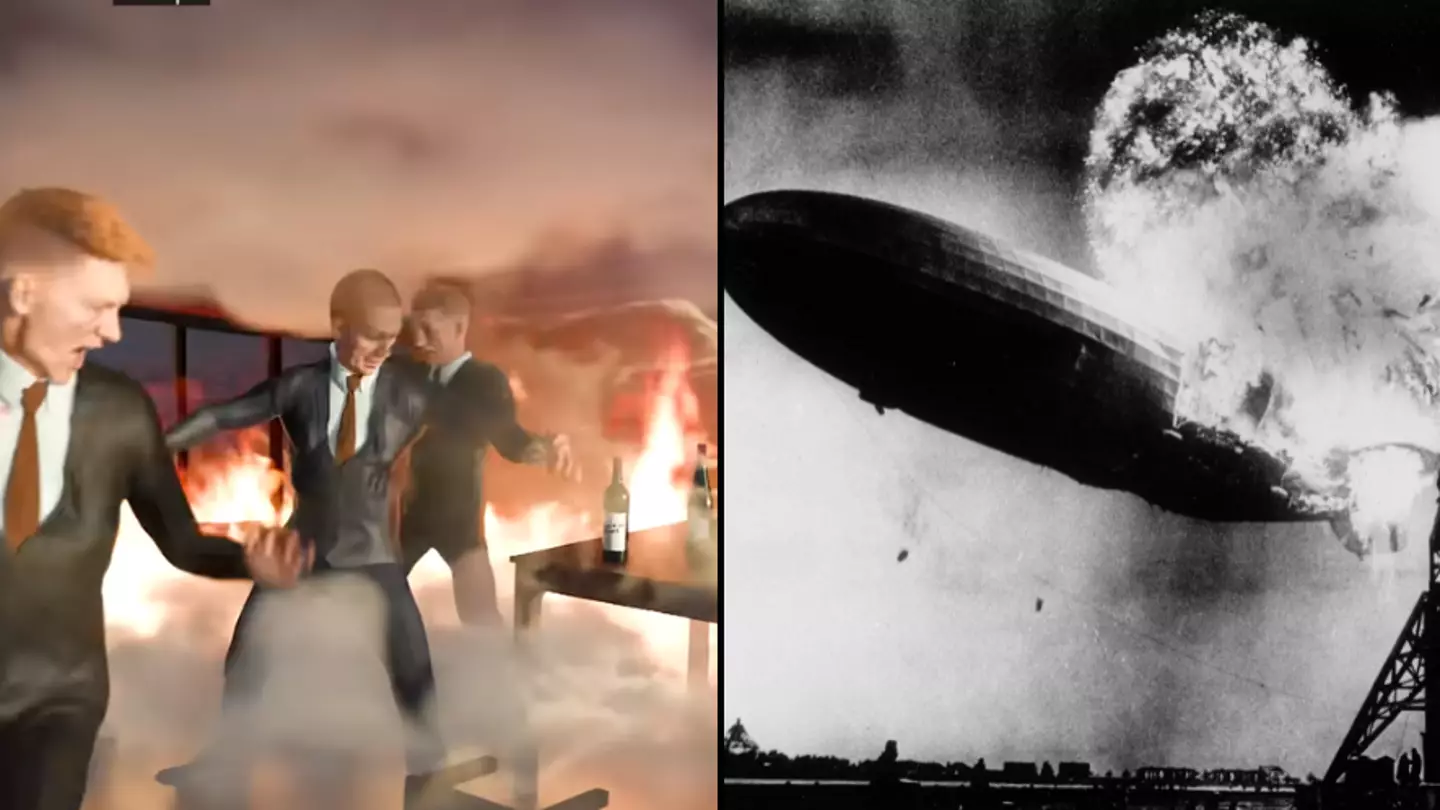
On 6 May, 1937, a giant airship with 97 people onboard was coming in for a landing in the US when it was suddenly engulfed in flames and crashed to the ground.
With the landing being filmed, the horrifying images of the burning carcass of an airship gained global recognition and became one of the iconic images of the 20th century.
That airship was the Hindenburg, and when it crashed, 35 people onboard, as well as one on the ground, died as a result of the sudden and disastrous spread of flames.
The fire spread across the airship in a matter of seconds, and now, we have a simulation for what it would have been like for those on board. Watch here:
YouTuber Zack D. Films said that the fire from the Hindenburg prevented some passengers from escaping, and prompted others to try and jump out of the still-airborne vessel in an attempt to escape.
Advert
The Hindenburg, named after the German general who became president in his later years and failed to do much about Hitler's rise to power, was soon the subject of a number of conspiracy theories, including claims of sabotage and a bomb on board.
However, inquiries conducted by both the US and Germany concluded that atmospheric conditions were to blame for the disaster.
The Americans suggested that an electrical phenomenon known as a 'brush discharge' had likely ignited the hydrogen which inflated the Hindenburg's balloon, while the Germans thought the spark might have come from a buildup of static electricity.
There have been a number of other theories as to what caused the Hindenburg disaster, but what is clear is that the hydrogen in the balloon ignited and consumed the craft within a matter of seconds.
Various newsreels put the time between the first signs of ignition and the Hindenburg crashing at a little over 30 seconds.
Advert
Most of the people on the port side of the airship were able to survive, while the chances of making it out of the starboard side were less likely as the Hindenburg rolled slightly to that side after it crashed.
.jpg)
While the Hindenburg is likely to be the most known airship disaster of all time, it's not the most deadly or devastating.
Many nations experimented with airship travel in the 20th century, but in time, each of them turned away from it as a means of conveying passengers.
The British-made R101 was the largest airship in the world before being superseded by the Hindenburg, and it crashed on its maiden overseas voyage in 1930, resulting in the deaths of 48 of the 54 people on board.
Advert
The French airship Dixmude exploded mid-air in 1923, killing all 52 people on board, while the American airship USS Akron was destroyed in a thunderstorm in 1933, killing 73 out of 76 people aboard.
Airships did get a bit of a second wind in the Second World War, where they turned out to be reasonably effective at protecting naval convoys from submarines.
Topics: History, YouTube, Science, Technology